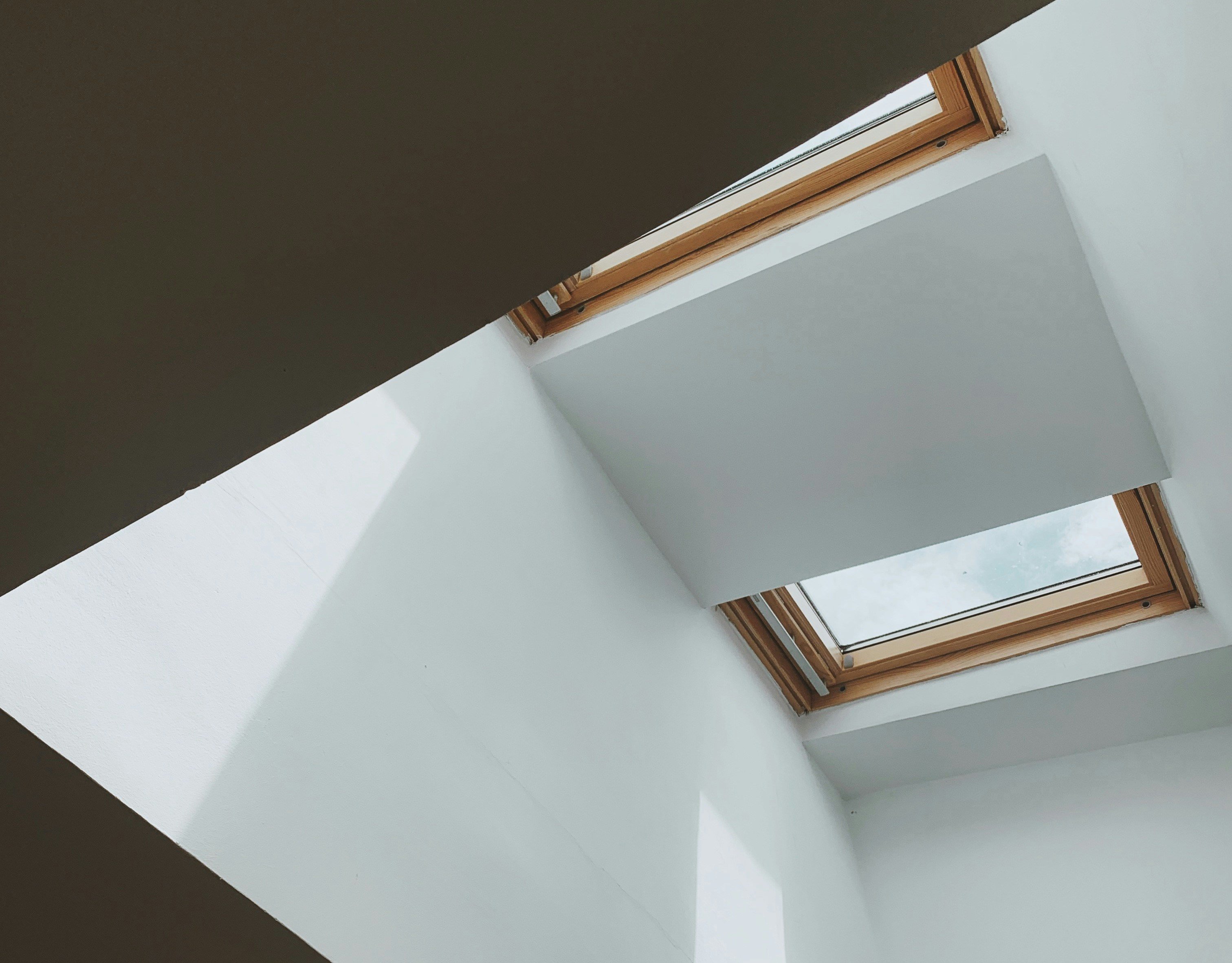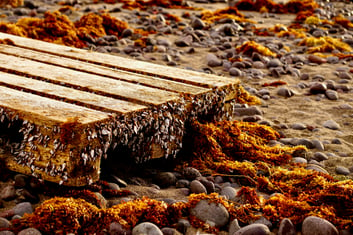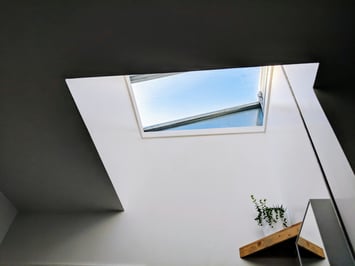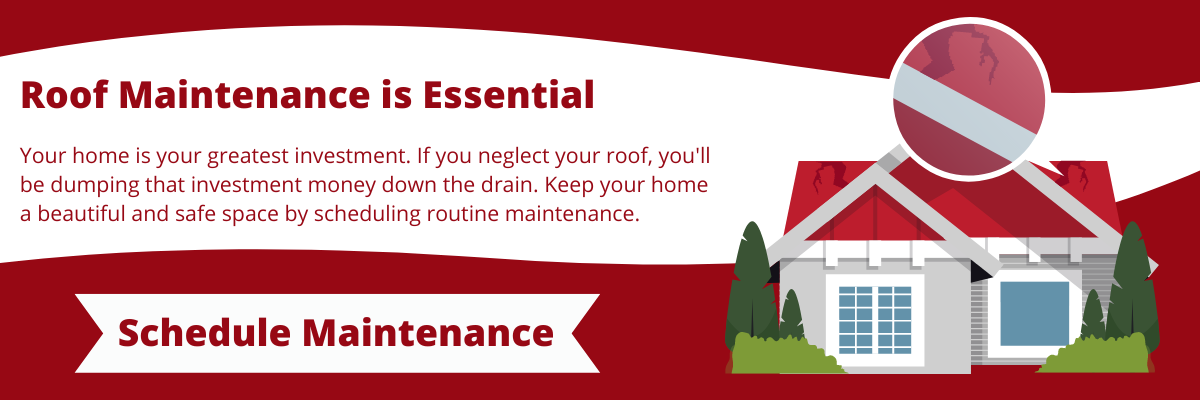What's the Red Substance Growing on My Skylights?
April , 2024 | 5 min. read

Picture this: You wake up one sunny morning, ready to greet the day with a flush of warm sunlight coming in from your skylights. But as you glance up at it, excitement turns to confusion. What's that strange red goop clinging to the glass? It's a mystery many homeowners face every day! But don't worry; we're here to share the secrets behind this peculiar (and annoying) phenomenon.
When roofing mysteries are involved, having a trusted guide is essential. At RoofCrafters, we've seen it all regarding roof sludge, and we're here to share our expertise with you. With three decades of experience, we've honed our understanding of roof care to provide you with the best advice and solutions possible!
So, let's uncover the truth behind the red substance on your skylights. Is it mold? Is it plant matter? Armed with knowledge and insight, we'll explore how to keep your skylights sparkling clean and free from mysterious materials like this one. Let's jump right in!
What's Growing on My Skylights?
Alright, we know you have a mystery substance on your skylight(s). What could it be? This substance, often mistaken for rust or regular algae, is actually a type of airborne algae known as Trentepohlia.

Trentepohlia thrives in environments with high humidity and exposure to sunlight, making skylights an ideal breeding ground. Your climate is perfect for this little guy since you're most likely located in the Southeast. Nice and toasty with consistent moisture in the air = a happy home for algae. Unlike traditional green algae, which is also commonly found on roofs and other outdoor surfaces, Trentepohlia appears red or orange due to pigments protecting it from ultraviolet radiation. This unique adaptation allows it to flourish even in harsh sunlight, giving skylights a distinctive crimson hue.
So, why does this algae choose skylights as its home? The answer lies in the design of these structures. Skylights provide the perfect combination of sunlight and moisture, creating an environment where Trentepohlia can thrive. The glass surface of skylights also provides a stable substrate for the algae to attach to, allowing it to spread and multiply over time.
Disclaimer: While the sight of red algae on your skylights may feel concerning, rest assured that it poses no threat to your health or the structural integrity of your home. However, it can detract from their aesthetic appeal and may eventually obstruct the passage of natural light into your home. That's why it's essential to address the issue promptly to restore your skylights to their former glory and prevent further growth.
How to Remove Algae from Your Skylights
Removing the red substance from your skylights requires a combination of thorough cleaning and preventative measures to prevent its return! Here are some effective methods to tackle the issue:
If you have easy access to your skylight, give it a good clean. And we can't stress this enough - if your skylight isn't accessible, don't try to get on your roof. We don't want anyone racking up a hospital bill!
First, start by thoroughly cleaning the affected skylights using a gentle yet effective cleaning solution. You can create your own solution by mixing warm water with a small amount of mild detergent or dish soap. Alternatively, you can purchase specialized cleaners designed specifically for removing algae and other organic growth from glass surfaces. Use a soft-bristled brush or sponge to gently scrub the affected areas, being careful not to scratch the glass.

For stubborn algae stains, you may need to use a stronger cleaning solution, such as one containing vinegar or hydrogen peroxide. These natural cleaners can help break down the algae and loosen its grip on the glass surface. Apply the cleaner directly to the affected areas and allow it to sit for a few minutes before scrubbing with a brush or sponge. Rinse the skylights thoroughly with clean water to remove any remaining residue.
Once the skylights are clean, consider applying a protective coating or sealant to prevent future algae growth. There are several products available on the market specifically designed to inhibit algae and mold growth on glass surfaces. These coatings create a protective barrier that makes it more difficult for algae spores to attach to the glass, reducing the likelihood of future growth. Follow the manufacturer's instructions carefully when applying the coating to ensure optimal results.
Besides cleaning and preventative measures, it's essential to address any underlying issues contributing to algae growth on your skylights. Poor ventilation, excessive moisture, and lack of sunlight can all create an environment conducive to algae growth. Make sure your skylights are adequately ventilated, and consider trimming back any overhanging branches or foliage that may be blocking sunlight. By addressing these underlying issues, you can help prevent algae growth and keep your skylights looking clean and clear for years to come.

Before we go, if you don't feel comfortable cleaning your skylights, professionals can take care of it for you! If you implement routine maintenance, you could also avoid this issue altogether. To schedule an inspection with RoofCrafters and receive our expert opinion, click the button below.
Get Rid of Skylight Algae Once and For All!
We hope this helped! Remember that dealing with the red substance on skylights requires a proactive approach to cleaning and maintenance. By regularly cleaning your skylights with gentle yet effective cleaning solutions and implementing preventative measures, you can effectively remove algae growth and prevent its return. Addressing any underlying issues like poor ventilation or excessive moisture can also help create an environment less conducive to algae growth.
Maintaining clean and clear skylights not only enhances the aesthetic appeal of your home but also ensures optimal functionality and longevity of your skylight system. With the right cleaning techniques and preventative measures, you can keep your skylights looking their best and enjoy the benefits of natural light without the unsightly presence of algae.
At RoofCrafters, we understand the importance of proper skylight maintenance and are here to assist you with all your roofing needs. Our team of experts can provide guidance on cleaning techniques, preventative measures, and other maintenance tips to help you keep your skylights in top condition. Contact us today to learn more about our services and how we can help you maintain beautiful, algae-free skylights for years to come.
My name is Anthony, and I am the lead estimator of RoofCrafters’ Georgia/South Carolina division. The roof is the most important part of a structure, and people count on that to protect themselves and their families. That is one of the many reasons why I love my job and enjoy coming to work every day. The continuous training, honesty, and providing the customer with the Roofcrafters experience is what makes me the best in the business.




